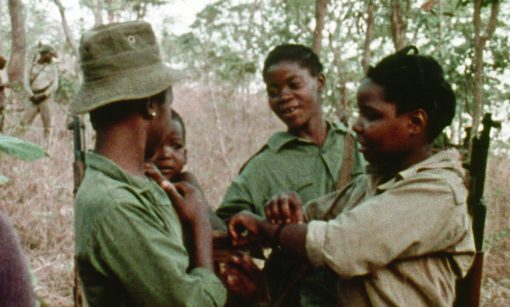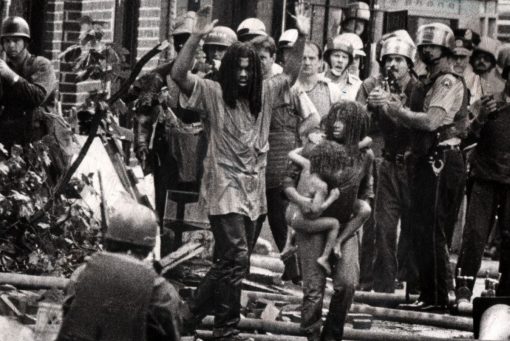The advances the internet has made in the past few years in terms of scope and access are nothing short of incredible. In virtually no time at all, the entire structure of the way we watch, read and listen to content has been redesigned. This has had a significant effect on documentaries. No longer relegated to select theatrical releases and late night TV screenings, they are more accessible and distributable than ever before.
As a result of this, we’ve witnessed a slew of challenging, powerful documentaries this year alone. There are thousands of them out there that ought to carry a ‘must watch’ stamp, but I’m going to narrow it down to a personal top 10, namely the top 10 most important of this demi-decade. They range from shocking to inspiring to disturbing and two of them have ‘fish’ in the title. Enjoy.
10. Jodorowsky’s Dune
What would you say if I told you that the entire fabric of screen science-fiction as we know it today was molded by a film that doesn’t actually exist? While 2001 had an undeniable influence on all the budding film-makers of the 70s, Alexjandro Jodorowsky, the wacky Chilean film-maker behind such abstract fare as El Topo and The Holy Mountain came very close to making another film that would have changed everything. David Lynch’s adaptation of Frank Herbert’s sprawling novel Dune is a well documented flop, but long before the rights were offered to him, Jodorowsky was amassing a team of what he called ‘spirit warriors’ to realise the book in truly ridiculous fashion.
This eye-opening documentary chronicles the project as Jodorowsky drafted such players as the famed comic artist Moebius, cover artist Chris Foss, Pink Floyd, H.R. Giger, Dan O’Bannon and cast members like Orson Welles, Mick Jagger and Salvador Dali (who he had to jump through some pretty major hoops to persuade). His vision for this massive sci-fi epic was so mammoth that even without actually being made (because money) it still had a wide, invaluable impact. Alien, Flash Gordon, Star Wars, Blade Runner, The Matrix and countless others all contain Dune‘s DNA.
9. Blackfish
Looking back (and having seen this film), I’m somewhat ashamed that when I saw the Shamu show at Seaworld (first in 2001 and then again in 2006) I didn’t feel even remotely uneasy. Even without all the alarming information presented in this film, there’s something very wrong with a 900kg, highly intelligent apex predator doing tricks on command for a crowd of tourists in waterproof ponchos.
Blackfish came out in 2013, but production actually started 3 years prior, almost immediately after the death of Dawn Brancheau by Tilikum, a troublesome orca who had already been involved in 2 other trainer deaths. The film runs a shocking tour of interviews that reveal how the whales were forcibly abducted in years past, how inadequate their treatment in captivity continues to be and all the ways that Seaworld and their investors have tried to make this go away, such as manipulating statistics and outright lying to visitors. If you want any assurance of Blackfish’s impact, just look at the massive backlash Seaworld have been weathering since it came out.
8. Catfish
The scope of social media only continues to grow, no longer the refuge of people who struggle to make friends in the outside world, now all of us are encouraged to handcuff ourselves to Facebook, Tinder and all the other sites that reduce interaction to bleeping noises. Since first coming out in 2010, Catfish has spawned a TV miniseries and gained enormous acclaim (although due to questions of authenticity and several lawsuits, it might never actually turn a profit).
The film chronicles a budding online relationship between a photographer named Nev and a girl named Megan. As the film progresses, their relationship becomes more intimate, but they never meet. Things gradually become more complicated and tangled as the validity of Megan’s claims start getting drawn into question. In the closing moments of the film, the shocking truth is revealed. As well as being a stark commentary on love in the age of information, it’s one of the most affecting true stories ever committed to film.
7. Concerning Violence
You might not have heard of Frantz Fanon, but he penned one of the most controversial texts to come out of the 1960s, an incendiary tome called The Wretched of the Earth. It exemplifies the poverty line and suggests that violent revolution is a justifiable, inevitable outcome of elitism. In Corning Violence Göran Hugo Olsson takes the ideas laid down in the essay of same name in the book and applies them to the rebellions in Africa in the 1970s.
The narration of the film (done by none other than Ms. Lauryn Hill) sticks almost uniformly to the words of the essay, making the links between Fanon’s ideas and the social unrest in Africa at that time inescapably clear. It’s a remarkably effective examination of the turbulent, ever changing merry-go-round of regimes that make up African society even to this day and clamors for change without ever directly stating that it’s needed, it trusts the audience to figure that out for themselves.
6. Let the Fire Burn
With all the brew-ha-ha that’s been going on in the US in recent months with regards to police brutality and racism (I apologise for using such a disproportionate term to describe it, I’ve just always wanted to say brew-ha-ha in an article), Let the Fire Burn was almost ahead of its time, which is doubly ironic seeing as it’s about something that happened in 1985. Directed by Jason Osder, it recounts the events leading up to the 1985 Osage Avenue firebombing in Philadelphia in alarming detail, leaving no stone unturned.
The Osage Avenue bombing was a supposedly retaliatory attack against the MOVE organisation, a commune/social movement consisting largely of African-Americans which while widely regarded as peaceful, was considered dangerous by some. Most of them in the FBI. We’ll probably never know what they really were and Osder’s film wisely chooses not to dwell on that conundrum, instead focusing on the tragic events of the bombing itself, when in May of 85 during a police standoff an explosive device was dropped on the MOVE headquarters. It was only intended to drive them out, but the explosion set dozens of houses ablaze and killed 11 people, 5 of them were children. The film shows the events in excruciating detail and in so doing almost resembles a docu-drama, except what you’re watching is 100% real. It’s a story that needs to be told, even knowing that an American city was willing to literally bomb itself is pretty big eye-opener.
Some of the coverage you find on Cultured Vultures contains affiliate links, which provide us with small commissions based on purchases made from visiting our site. We cover gaming news, movie reviews, wrestling and much more.








